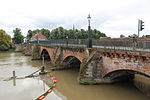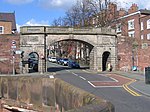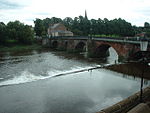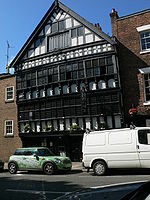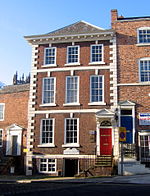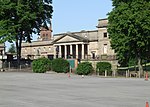St Mary's Church, Handbridge
20th-century Church of England church buildingsChurch of England church buildings in CheshireChurches completed in 1914Churches in ChesterDiocese of Chester ... and 5 more
Gothic Revival architecture in CheshireGothic Revival church buildings in EnglandGrade II* listed churches in CheshireGrade II listed buildings in ChesterUse British English from December 2017

St Mary's Church is located on Overleigh Road in Handbridge, an area south of the River Dee, in the city of Chester, Cheshire, England. It is also known as the Church of St Mary-without-the-Walls, which was to distinguish it from Church of St Mary-on-the-Hill across the River Dee within the city walls. The church is recorded in the National Heritage List for England as a designated Grade II* listed building. It is an active Anglican parish church in the diocese of Chester, the archdeaconry of Chester and the deanery of Chester.
Excerpt from the Wikipedia article St Mary's Church, Handbridge (License: CC BY-SA 3.0, Authors, Images).St Mary's Church, Handbridge
Overleigh Road, Chester Handbridge
Geographical coordinates (GPS) Address External links Nearby Places Show on map
Geographical coordinates (GPS)
| Latitude | Longitude |
|---|---|
| N 53.1829 ° | E -2.8889 ° |
Address
Saint Mary on the Hill (St Mary Without the Walls)
Overleigh Road
CH4 7HL Chester, Handbridge
England, United Kingdom
Open on Google Maps


